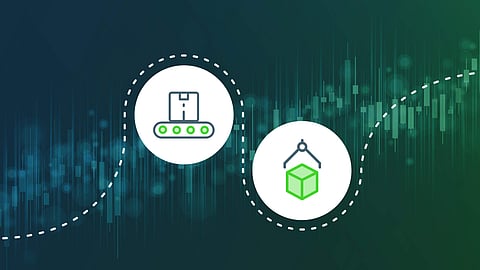Global Logistics Technology Adoption: Trends and Market Perspectives
Technology adoption in the logistics sector is progressing at an accelerated pace, driven by both technological innovation and evolving market demands. However, the rate and depth of adoption vary significantly by region, company size, and specific market segment.
Here’s an overview of how technology is being integrated across global logistics:
Automation and Robotics
Warehousing: Modern warehouses worldwide are increasingly employing automated storage and retrieval systems, robotic picking systems, and autonomous guided vehicles (AGVs) to boost efficiency and reduce labor costs.
Leading markets in North America, Europe, and parts of Asia are at the forefront, while emerging economies are beginning to invest in these technologies.
Distribution Centers: Automation isn’t limited to warehousing; distribution centers are integrating automated sorting systems and robotics to expedite order processing, particularly to meet the demands of rapid e-commerce fulfillment.
Digital Transformation and Data Analytics
IoT and Sensors: The use of Internet of Things (IoT) devices for real-time tracking and condition monitoring has become more common. Companies are deploying sensors on vehicles, containers, and packages to gain insights into location, temperature, and other critical variables.
Big Data and Predictive Analytics: Advanced data analytics platforms are being used to optimize routes, forecast demand, and manage inventory levels. This adoption is growing globally, though more mature markets tend to have greater integration of these solutions compared to developing regions.
Cloud Computing: The logistics industry is increasingly leveraging cloud-based systems for supply chain management and data sharing, which enhances collaboration across different parts of the network.
Blockchain and Enhanced Transparency
Traceability: Blockchain technology is gradually being adopted to improve the traceability and security of transactions, documentation, and provenance of goods. While still in its early stages in many parts of the world, pilot projects and industry collaborations are paving the way for broader implementation.
Smart Contracts: Some logistics firms are experimenting with smart contracts to streamline and automate processes like payment release upon delivery, though widespread adoption will depend on overcoming interoperability and standardization challenges.
Artificial Intelligence (AI) and Machine Learning
Operational Optimization: AI is increasingly used for route optimization, demand forecasting, and even dynamic pricing. Major logistics players in advanced economies are already integrating these tools, while smaller firms are starting to adopt simplified versions or partner with tech providers.
Customer Service: Chatbots and AI-driven customer support systems are becoming common in providing real-time updates and handling inquiries, enhancing the overall customer experience.
Autonomous Vehicles and Drones
Last-Mile Delivery: Autonomous vehicles and drones are being tested and, in some cases, deployed for last-mile delivery solutions, particularly in densely populated urban areas. Regulatory environments and technological maturity vary significantly across regions, affecting the pace of adoption.
Freight and Long-Distance Transport: Trials of autonomous trucks for long-haul transportation are underway, especially in countries like the United States and parts of Europe, where regulatory frameworks are evolving to accommodate these innovations.
Regional Variations in Adoption
Developed Markets: North America, Western Europe, and parts of Asia (like Japan and South Korea) are leading in terms of technology integration due to higher capital availability, stronger infrastructure, and supportive regulatory frameworks.
Emerging Markets: While emerging economies are catching up, they often face challenges such as limited infrastructure, regulatory hurdles, and a smaller pool of tech talent. However, targeted investments and partnerships are beginning to close this gap.
Global Collaboration: International logistics companies are often adopting technologies uniformly across their networks, which helps drive a more consistent level of technological adoption worldwide. Meanwhile, smaller regional firms might adopt solutions more incrementally.
Challenges and Future Directions
Integration and Interoperability: As new technologies are adopted, ensuring they integrate seamlessly with existing systems remains a challenge. This is a focus area for many companies as they look to create unified, end-to-end digital ecosystems.
Cybersecurity: With increased digitalization comes heightened risk of cyber threats. Investment in cybersecurity measures is becoming as critical as the adoption of the technologies themselves.
Skill Gaps: The workforce needs to adapt to new technologies. Continuous training and a shift in skill requirements are essential for maximizing the benefits of digital transformation.
In summary, while technology adoption in global logistics is well underway and is transforming the industry, the pace of change varies across regions and segments.
Companies that can effectively integrate these technologies, address interoperability challenges, and invest in workforce training will be best positioned to reap the benefits of this ongoing digital transformation.
Read More: UAE Logistics Market Set to Touch US$52 Billion by 2027


